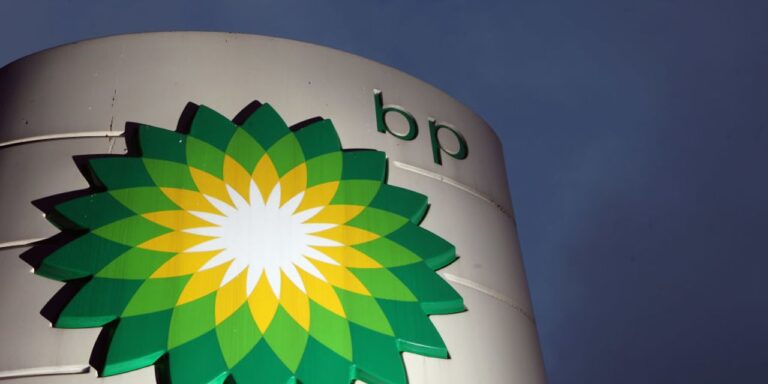
[ad_1]
Text size

BP’s profit tumbled 70% in the second quarter as oil and gas prices fell sharply from the year-ago period.
Getty Images
BP
joined its peers
Shell
,
Exxon
and
Chevron
in reporting a sharp profit drop in the second quarter due to lower oil and gas prices.
However, the British oil giant raised its dividend by 10% and announced a new $1.5 billion share buyback program, helping the stock move higher early Tuesday.
The company’s earnings confirmed the industry trend of tumbling profits, compared with the same period last year when energy prices were soaring following Russia’s invasion of Ukraine.
The declines have been steep.
BP
’s
(ticker: BP) profit fell 69%, Exxon’s (XOM) tumbled 55%,
Shell
’s
(SHEL) dropped 56%,
Chevron
’s
(CVX) declined 47%. Investors knew the slump was coming, but it was worse than expected. Only Chevron, out of those four oil giants, beat expectations.
BP’s underlying replacement cost profit—the company’s definition of net income—fell 69% to $2.6 billion, or 14.77 cents per share in the second quarter. Analysts were expecting net income of $3.4 billion, 19 cents per share.
Despite missing expectations, investors were encouraged by BP’s commitment to returning 60% of 2023 surplus cash flow through share buybacks—and by the announcement of a $1.5 billion buyback for the second quarter.
“The BP share price, much like its peer Shell, has probably seen the highs of the year, given how far energy prices have fallen over the past 12 months,” CMC Markets analyst Michael Hewson said early Tuesday. The shares currently sit 14% below their 2023 high reached in February.
The stock rose 1.2% in early London trading, and is up 3.4% so far in 2023, outperforming Shell (up 2.3%),
Exxon
(down 2.8%), and Chevron (8.8% lower).
The initial reaction suggests investors have quickly gotten over the earnings miss and profit slump—and are looking ahead, buoyed by more payouts.
Write to Callum Keown at [email protected]
[ad_2]